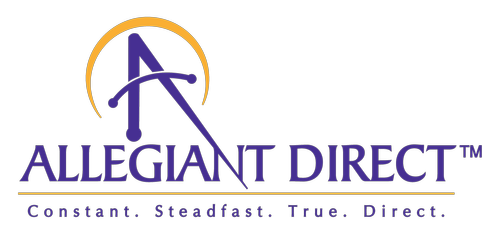The Allegiant Direct Blogs

Were the COVID years the “good ol’ days” for direct mail?!
By Mark Jacobson
Senior Consultant
The Covid years were great for fundraisers using direct mail. But things have changed since then.
Can nonprofits get that magic back?
With something called “Moves Management,” they can.
In mid-level strategies, Moves Management requires a review of each point of contact with your chosen file and the creation of a new “donor journey.”
You are surely in a competitive environment for your donor’s attention. Your communications must be concise, specific, easy to read, and actionable.
Appeals that speak to an identified donor need are always the most successful. How well you can show how you are making a difference in that area impassions the donor to act.
As such, all contact strategies must be viewed from footings of:
“What can I do to more fully engage my donor?”
“Have I met donor expectations for frequency of contact?”
“Specificity of our “ask”?”
“Do I know what channel(s) are my donor’s preference to communicate?
To be asked? To be thanked? To be updated and learn more?”
Modifying your Strategies and Tactics
Direct Mail
When direct mail is utilized for mid-level giving, elevated levels of personalization are essential.
Not simple “junk mail” personalization, but copy written that addresses key donor needs, and using personalization not to highlight the page, but to make its content more easily identifiable and readable.
Many successful programs borrow tactics used in lower-end major gifting. Highly personalized “Mini-Proposals” – similar in nature to grant request documents -- have proven successful for $1,000+ donors.
Specificity of program needs and adequate details are key. Avoid listing a “menu” of areas supported by donor generosity. Details should be as short and to-the-point as possible. While the audience is highly pre-qualified as the best relationships to your cause, capturing attention must still be accomplished in the first few seconds of package receipt. This is still direct response.
For donors less than $1,000, those with most recent and most frequent gifts are the most likely to renew. Build the case for ongoing and ask again soon!
Quickly identify the added urgency/importance of the reason why you have approached them with a special request/challenge.
At the top of the cover letter, identify the challenge/threat, what YOU can and will do about it, and finally, what the donor can do to help meet the challenge.
Tell them how and when you will report back on progress made.
Consider naming/branding your mid-level program and/or giving levels; this allows you to appeal to each as part of a small group of difference makers.
Always refer to the donor’s last/previous support when asking for renewed giving.
Digital
Always ensure full consistency of design and messaging between mail and email. Use digital channels to reinforce direct mail.
Be sure your appeals and your website are in synch.
Use email as a second form of acknowledgement of gifts, regardless of channel source of the support.
Use social media to report progress towards achieving goals.
Acknowledgment
Acknowledge support by mail within 48 hours.
Send additional thank you via email.
Post group acknowledgement on social media.
Consider mid-level relationship-focused events and other forms of thanks (but do not tie them to the giving process/solicitation).
Use back-end “premiums” only – and only if necessary and desirable. Do not create a dependence on premiums as a cause and effect of giving moving This can create a dependence and reduce sustained giving.
Mid-level donors should receive the most frequent “friend-raising” points of contact with you – above and beyond solicitations.
Accountability
Always continue the conversation with the donor as you have left it. For donors, report back several times (on or offline) on progress made and when goals are achieved.
Share success stories correlated to the donor’s gift. If reports on successes are delivered via social media, refer to the group of donors that have made it all happen.
What’s the proper mix of on and offline communications to ensure maximized donor engagement?
Overall renewal statistics are clear – response and retention rates are highest when you utilize more than one channel. Donors who have made gifts BOTH via direct mail and digitally are almost twice as likely to continue giving in successive years.
In direct mail and digitally, the ratio of at least 4:1 in number of conversational contacts per solicitation seems to be a key and measurable driver.
TO DISCUSS YOUR PROGRAM WITH ALLEGIANT DIRECT, CLICK HERE NOW:
BOOK A CALL
© 2025 Allegiant Direct, Inc.
Frequently asked questions
What kind of copy gets the best response for healthcare fundraising?
Mainly, copy that’s relevant, focused on the donor and non-institutional. Our experience is that it needs to be something related to heart or cancer and perhaps technology that does something better, keeps you out of the hospital and/or is less costly and less invasive. For children’s hospitals and hospices, patient stories usually work best, but appeals for new technology, equipment or programs can also work well.
Which is best - a window or closed face envelope?
We use both depending on the situation. A closed face envelope is a little more expensive. However, the #10 window envelope has been a workhorse for us for many decades. For hospital grateful patients, we think it may work because it approximates the look of a hospital bill. You can split test window vs. closed face, and sometimes you’ll find that a window does better, and sometimes a closed face works better. A closed face envelope has a more professionally looking business correspondence feel to it.
What about using a teaser on the outside envelope?
We usually come down on the side of not using teasers. The reason - if you put something on the envelope that gives the recipient an idea of what's inside, and they're not interested – like if they can tell it's a fundraising letter - then the trash can is always nearby. The problem with teasers is that most people who write teasers do not know how to tease properly. A teaser has to have some mystery to it. So, when you see it, you say, “What's this all about?” Having no teaser is its own mystery because you're wondering “why are these people writing me?” Then you want to find out and you open the envelope. We’ve used teasers in the past and tested them. Sometimes they work, and sometimes they don't. More often than not, they don't work. So, unless you've got a superb teaser, you may want to not use one at all.
Which lists work best for healthcare fundraising?
Most of our hospital clients solicit former patients, and they mostly work well. But if you’re a hospice, you have few numbers of bereaved individuals to solicit. By the same token, if you’re a children’s hospital, you have a minimum number of patients to contact. Parents of children’s hospital patients (the guarantors) are too young to be good philanthropic prospects. As a result, what we've found is that rented lists of donors to healthcare causes in your area often work better than patients. With hospices and children’s homes, you almost have no choice but to use rented names to build your donor base. Perhaps surprisingly, rented names tend to outperform hospital grateful patients. But why would a person who hasn't been in your hospital perform better than someone who has? With patients, we really only know two things about them. We know they're the correct age because we can select them based on age or date of birth from the patient record. We also know they've been in the hospital. But that’s it. We don't know anything else about them. But with a rented name, we know they're the right age because they've given to other nonprofit organizations. They’re definitely philanthropic. They’ve also given through the mail and are responsive to mail appeals. We also know they like to give, and particularly to healthcare causes. So that gives them an edge on former patients.
Book A Call
(FREE 30 minute consult)
To make your FREE consult appointment, select a date and click submit,
then you will be taken to a page to select the time. We look forward to chatting
with you! (If our calendar is not available, please refresh your page.)
Contact Us for More Information
For general inquiries or to receive additional information about our services, please write or call us.
Allegiant Direct, Inc.
278 Franklin Road, Suite 290
Brentwood, TN 37027
Still have questions?

Allegiant Direct, Inc.
278 Franklin Road, Suite 290
Brentwood, TN 37027
Marketing Systems Built By Be Known
We make no income or earnings claims - your results may vary.
We present testimonials and insights about other people’s experiences with our website for purposes of illustration only. The testimonials and examples used are of actual clients. They are not intended to represent or guarantee that current or future clients will achieve the same or similar results; rather, these testimonials represent what is possible for illustrative purposes only.
This site is not a part of the Google or Facebook website or Google/Facebook/Meta Inc. Additionally, this site is NOT endorsed by or affiliated with Google or Facebook in any way. GOOGLE and FACEBOOK are trademarks of GOOGLE, Inc. and FACEBOOK, Inc or Meta, Inc.


